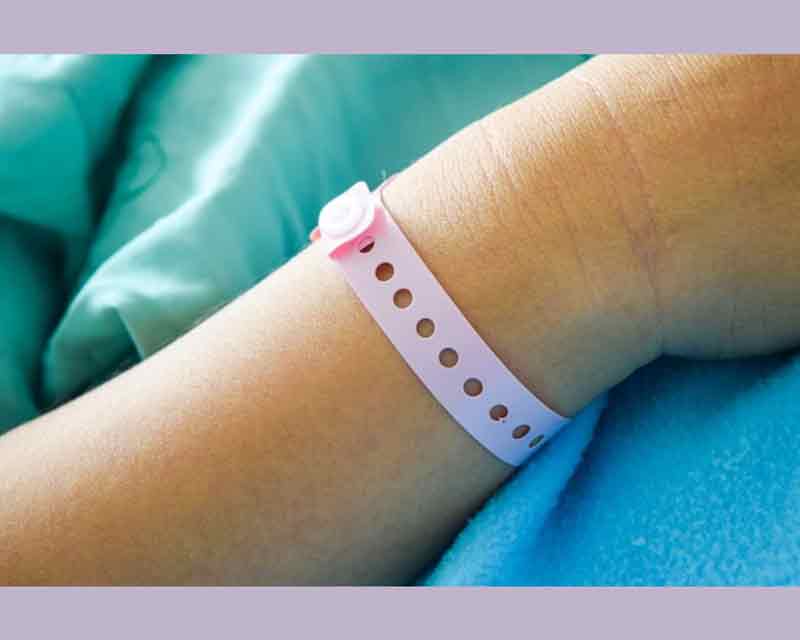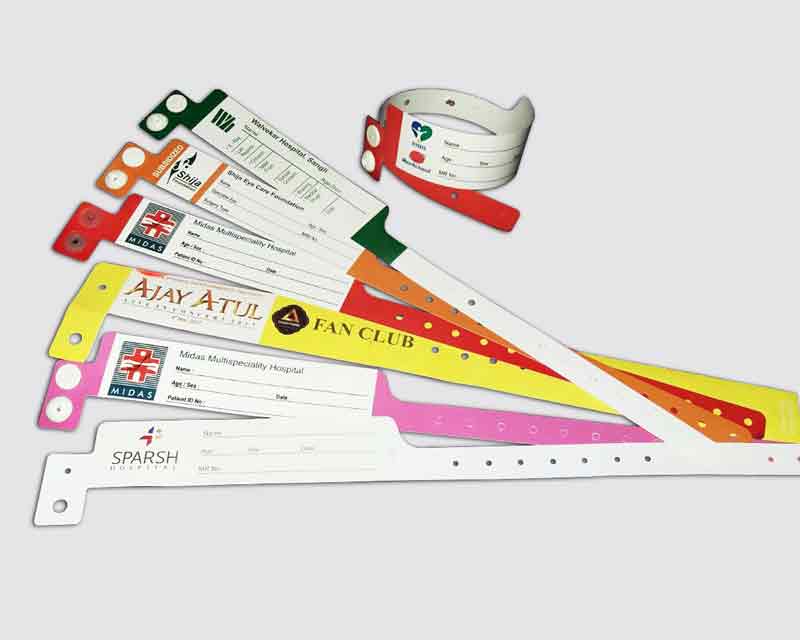Choosing the Right Components for Your Patient Identification Band: A Step-by-Step Guide
Choosing the Right Components for Your Patient Identification Band: A Step-by-Step Guide
Blog Article
Discovering the Various Kinds Of Patient Identification Band Used in Medical Facilities
In the complex world of medical care, the crucial function of Patient Identification bands frequently goes undetected. These bands, differing from simple paper wristbands to sophisticated RFID bands, create the backbone of Patient security procedures, guaranteeing accuracy in Patient Identification. Yet, the large diversity of these bands, each with its distinct advantages and restrictions, is often neglected. As we navigate through this subject, one may gain insight right into the subtle complexities and vital value of such bands in medical centers.
Recognizing the Importance of Patient Identification Bands
While they may appear like plain accessories, Patient Identification bands play an essential role in clinical centers. These bands work as an essential tool for verifying Patient identity, stopping medical errors associated to misidentification. The bands normally present necessary details such as the Patient's name, age, blood kind, and any known allergies. They allow healthcare experts to quickly access this vital info, consequently helping with precise and prompt clinical treatment. Patient Identification bands additionally help in improving administrative tasks, making sure accurate record-keeping and invoicing. Regardless of their simplicity, these bands embody the concept of Patient security, a keystone of high quality healthcare. Without them, the danger of clinical mistakes, and as a result, Patient harm, could considerably enhance.
Traditional Paper Wristbands: Their Usage and Limitations
Traditional paper wristbands have been a staple in Patient Identification across numerous medical facilities. While their use is extensive, they harbor specific limitations that may affect their effectiveness in Patient monitoring. This area will concentrate on the scope of their application and the intrinsic downsides connected with their use.
Paper Wristbands: Use Scope
In the realm of Patient Identification, paper wristbands have long held a critical duty. These bands are commonly used in outpatient settings, where the Patient's stay is temporary. The wristbands contain crucial info such as the Patient's name, date of birth, and a distinct Identification number. This easy, yet reliable system, allows physician to quickly and precisely identify individuals, guaranteeing the correct therapy is carried out. Paper wristbands are likewise used in emergency circumstances, where fast Identification is paramount. Their use encompasses events like blood contribution drives and mass inoculation programs, even more stressing their flexibility. Regardless of developments in modern technology, the humble paper wristband stays a trusted and affordable option for Patient Identification in various healthcare scenarios.
Limitations of Paper Wristbands
In spite of their widespread usage, paper wristbands are not without their downsides. In addition, paper wristbands frequently do not have the technical abilities of even more modern choices, such as barcoding or RFID chips, restricting their functionality to merely showing written info. Paper wristbands can create pain or skin inflammation to some people, especially when put on for prolonged periods.
Barcoded Wristbands: Developments in Patient Identification
While Patient Identification has actually long been a critical element of healthcare, the advent of barcoded wristbands signifies a significant jump ahead. These bands take advantage of the simplicity of barcoding innovation, allowing for Patient info to be quickly scanned and accessed. They improve the speed and precision of Patient Identification, minimizing the risk of clinical errors related to misidentification.
Superhigh Frequency Identification (RFID) Bands: a Step Towards Futuristic Health Care
The evolution of Patient Identification bands has caused the appearance of Superhigh frequency Identification (RFID) Bands (patient identification band). These ingenious gadgets present vital benefits for healthcare centers, providing an extra effective next page and technically progressed means of Patient Identification. The execution of RFID in health care is a substantial step in the direction of a more futuristic technique to Patient management and security
Comprehending RFID Bands

RFID Bands: Trick Benefits
Accepting a future where innovation and health care merge, superhigh frequency Identification bands provide a number of essential benefits. Primarily, these bands enhance Patient safety and security by providing exact, instant Identification, consequently decreasing clinical errors. RFID bands can keep a large quantity of Patient information, including case history and allergic reactions, enabling customized care. They likewise enhance administrative tasks, as the automated information access replaces hands-on processes, enhancing effectiveness and decreasing documents. Moreover, RFID bands supply real-time monitoring of individuals, vital in high-risk environments such as surgical procedure or extensive care. Lastly, these bands are durable and immune to environmental variables, making sure consistent performance. On the whole, RFID bands stand for a significant advancement in Patient Identification innovation, profiting both people and doctor.
Applying RFID in Medical Care
As we tip right into a highly advanced era, the application of RFID bands in healthcare comes to be increasingly essential. These bands provide a seamless way to track and identify patients, guaranteeing their security and boosting effectiveness in therapy procedures. RFID bands supply numerous benefits over traditional Identification methods. They can store a large amount of data, including the Patient's case history and treatment read this article plans, which can be quickly accessed by doctor. This information assists doctors make informed choices regarding the Patient's treatment plan. Furthermore, RFID bands minimize clinical errors by offering precise Patient Identification, which is important in stopping misdiagnosis or incorrect medication management. Therefore, the application of RFID bands is a significant step in the direction of enhancing Patient security and medical care delivery.

Color-Coded Wristbands: Helping in Quick and Accurate Medical Diagnosis
In the bustling setting of a medical center, color-coded wristbands have arised as vital tools for swift and precise Identification of a client's clinical problem. These wristbands, used by clients, carry certain colors that correspond to different clinical problems or statuses. This system is designed to supply instant visual signs to healthcare service providers, improving Patient safety and security and care quality.
Strategies for Effective Application and Management of Patient ID Bands
Attaining ideal usage Your Domain Name of Patient Identification bands requires a well-structured strategy for their application and management. Patient education is likewise essential; people should understand the function of the bands and the need for their continuous wear. It's essential to have a back-up strategy in place, such as barcode scanning or biometrics, to make certain that Patient Identification is never ever compromised.
Verdict
Patient Identification bands are critical in clinical facilities to make certain safety and security and precision. Effective implementation and administration of these bands can significantly decrease medical mistakes, improve performance, and boost total Patient treatment.
These bands, differing from straightforward paper wristbands to advanced RFID bands, form the backbone of Patient security procedures, making sure accuracy in Patient Identification.The development of Patient Identification bands has brought about the emergence of Radio Frequency Identification (RFID) Bands. In general, RFID bands represent a considerable development in Patient Identification modern technology, profiting both people and health care suppliers.
RFID bands minimize clinical errors by offering precise Patient Identification, which is essential in preventing misdiagnosis or incorrect medicine management. Patient education and learning is additionally vital; individuals need to recognize the objective of the bands and the requirement for their constant wear.
Report this page